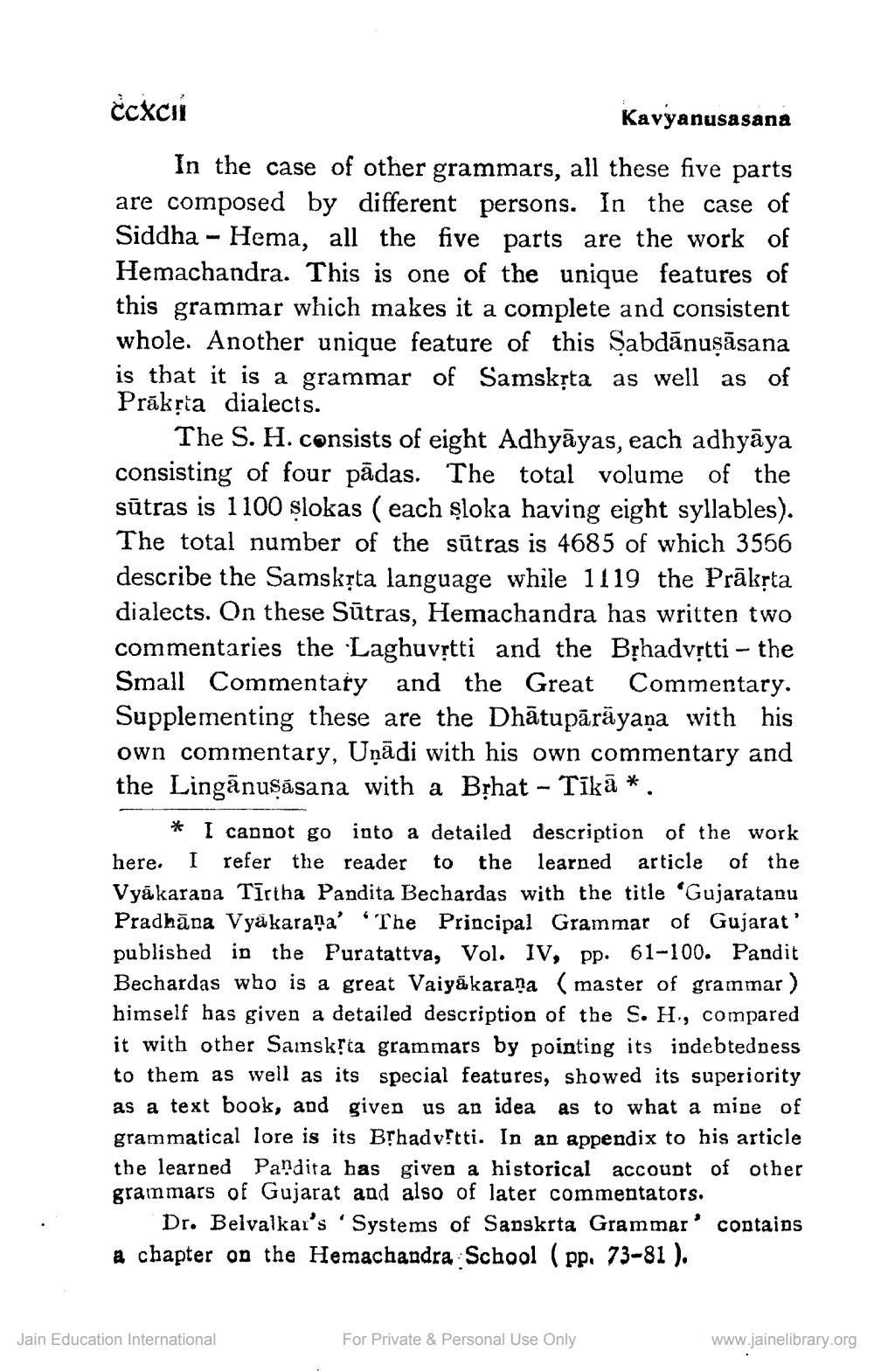________________
¿cxcii
Kavyanusasana
In the case of other grammars, all these five parts are composed by different persons. In the case of Siddha - Hema, all the five parts are the work of Hemachandra. This is one of the unique features of this grammar which makes it a complete and consistent whole. Another unique feature of this Sabdānuṣāsana is that it is a grammar of Samskṛta as well as of Prakṛta dialects.
The S. H. consists of eight Adhyāyas, each adhyāya consisting of four pādas. The total volume of the sūtras is 1100 slokas (each sloka having eight syllables). The total number of the sutras is 4685 of which 3556 describe the Samskṛta language while 1119 the Prākṛta dialects. On these Sūtras, Hemachandra has written two commentaries the Laghuvṛtti and the Bṛhadvṛtti - the Small Commentary and the Great Commentary. Supplementing these are the Dhātupārāyaṇa with his own commentary, Uṇādi with his own commentary and the Lingānusasana with a Bṛhat - Tīkā *.
* I cannot go into a detailed description of the work here. I refer the reader to the learned article of the Vyakarana Tīrtha Pandita Bechardas with the title "Gujaratanu Pradhana Vyakarana' 'The Principal Grammar of Gujarat' published in the Puratattva, Vol. IV, pp. 61-100. Pandit Bechardas who is a great Vaiyakaraṇa (master of grammar) himself has given a detailed description of the S. H., compared it with other Samskṛta grammars by pointing its indebtedness to them as well as its special features, showed its superiority as a text book, and given us an idea as to what a mine of grammatical lore is its Bṛhadvṛtti. In an appendix to his article the learned Pandita has given a historical account of other grammars of Gujarat and also of later commentators.
Dr. Belvalkar's 'Systems of Sanskrta Grammar contains a chapter on the Hemachandra School (pp. 73-81).
Jain Education International
For Private & Personal Use Only
www.jainelibrary.org




